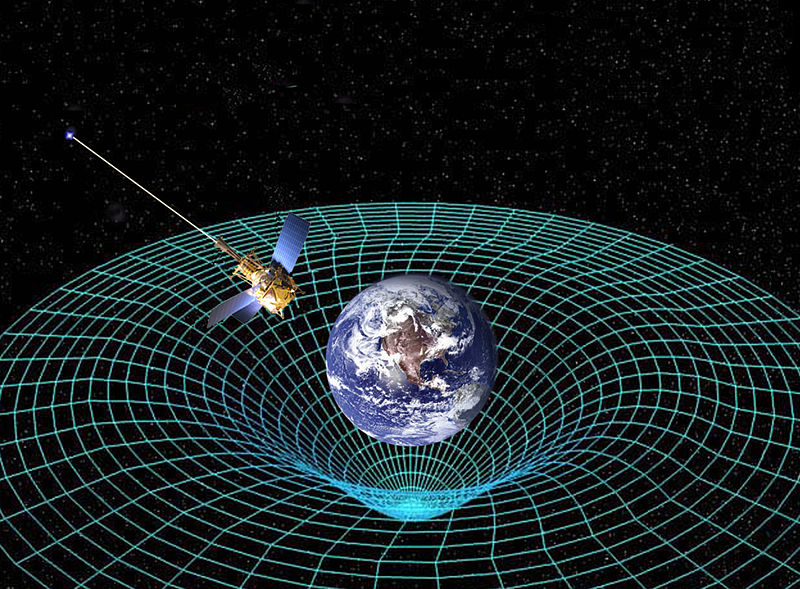What is Gravity?

Copyright NASA
It’s 8 AM. You sit up in bed, eyes half-closed, and reach over to grab your phone to check your morning e-mails. By the time you realize your imminent misfortune, it’s already too late: the empty water glass from the night before has fallen to the ground and shattered in a thousand glimmering pieces all over the floor. You exclaim, “WHY, oh WHY did that have to happen?”
The answer to this seemingly intuitive question is not what it seems. We all know objects fall to the ground (towards center of the earth to be exact). Furthermore, it wouldn’t be a stretch to conclude that more massive objects have a stronger gravitational “pull” on less massive objects. That is, your small glass falls towards the enormous earth, just as the small earth falls towards the super massive sun.
The brilliant Isaac Newton derived the classic explanation of this pulling force in the mid 17th century. But Newton admitted he didn’t know exactly why these characteristics of gravity existed: “I have not been able to discover the cause of those properties of gravity from phenomena, and I frame no hypotheses.” Why do heavier things PULL on lighter things? Are there invisible strings hiding behind the scenes?
It took a 26 year-old man working as a lowly patent clerk in Bern, Switzerland to unlock the mystical properties of space, time, and gravity. You don’t have to be a genius to figure out who he is. Albert Einstein, in his theory of general relativity, laid out a three-dimensional picture of exactly what the force of gravity is. Let’s do a little thought experiment and see if we can get to the bottom of this.
Imagine a bare trampoline sitting in your backyard. You walk over and place a bowling ball in the middle of it. What happens? A depression forms bending the rubber trampoline sheet around the heavy bowling ball. That was Einstein’s brilliant discovery: space is not just an empty vacuum like everyone had assumed, it was actually bendable by heavy objects just like the elastic of a trampoline.

The bowling ball on the trampoline. Copyright Wikipedia user Johnstone
Now with your bowling ball still sitting in the middle of the trampoline, imagine placing a golf ball about 2 feet from the center. The golf ball rolls toward the bowling ball due to the huge bend in the trampoline. If instead of a golf ball, you placed a 50-pound dumbbell 2 feet from the center, what do you think would happen? The lighter bowling ball would now roll toward that more massive dumbbell! Hopefully a few light bulbs are lighting up people, this is important stuff.
So that “pulling” force of gravity we were all taught in high school is really a push (a fall, actually). Because of those bends and depressions in space, less massive things roll naturally towards more massive things. No invisible strings or illusions here folks. Now admittedly, this is a simplistic explanation of our 3-dimensional world given that we used a 2-d model to explain it. Nevertheless, I believe this is a good start to modern astrophysics. If you have any questions, please leave them in the comments below.
Don’t forger to pick up those shattered glass fragments and be thankful you don’t have to wear suction cups on your feet.


No comments